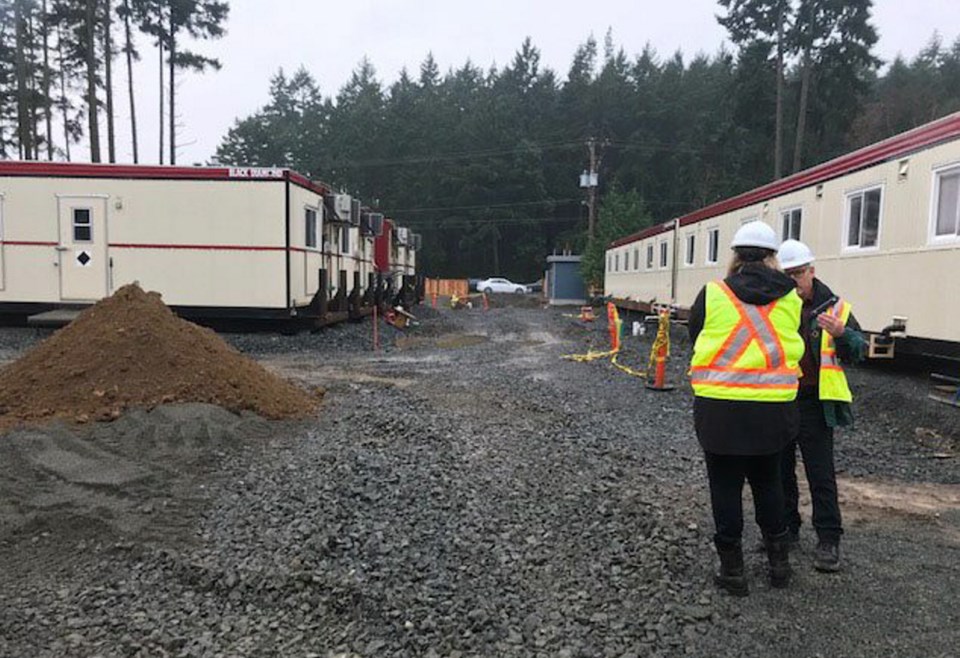How not to manage a homeless problem — the Nanaimo experience:
1. Wait (do nothing?) until at least 300 individuals have accumulated. Most will be drug-addicted and some will also suffer from mental illness. Some will be anarchist. Many will be from other parts of the province and country. Most will lack even basic social skills.
2. Continue waiting while:
• Nearby businesses experience a 1,000 per cent increase in criminal activity. Some are forced to close due to overwhelming theft.
• People defecate and urinate on sidewalks and store fronts despite portable toilets being brought in.
• Hundreds of used syringes are discarded despite clean needle exchanges being brought in.
• Used condoms appear on sidewalks and store fronts, alleys.
3. Spend $2 million in taxpayer dollars to acquire land from an offshore investor.
• Ensure this land is not on the list of city-recommended properties for supportive housing and does not comply with the official community plan.
• Don’t worry that the land is not zoned for this use. Too bad for neighbours who checked and took into consideration the zoning in the area before purchasing their homes.
• Ensure the land acquired is in an established, unsuspecting, quiet, middle-class neighbourhood consisting mainly of heritage-style homes and apartment blocks. Ignore the fact this neighbourhood already has three supportive-housing facilities and is doing its fair share according to the OCP.
• Do not use a large, recently closed hotel that is nearby and could serve all immediate needs of housing, including ready-to-go washroom and kitchen facilities.
• Do not use nearby unused army barracks.
• Do not restrict the project to already provincial or city-owned property.
• Do not acquire land in the area that is available and zoned for this use.
4. Ignore frivolous city bylaws such as:
• Permitted zoning uses.
• Density and parking limits.
• Building permits.
• If you’re going to ignore frivolous city bylaws, why not lease or acquire land in rural or industrial/warehouse type areas? There is lots of this type of land available. It would provide the needed housing while also providing a buffer, thereby giving the homeless individuals time and space to transition to the general community while not exposing the middle-class target neighbourhood to the rampant anti-social behaviour.
5. Do not consult with residents of the unsuspecting target neighbourhood.
6. Bring in construction trailers from 1,000 miles away that will serve as the “temporary” housing for four or five years.
7. Plunk 80 of the homeless individuals onto the property before the property is ready for use (no gates, incomplete washroom facilities, security not in place).
8. Run an industrial generator as close as possible to the neighbouring homes for 12 hours per day, seven days a week. (Don’t put it on the far side of your property in consideration of the neighbours.)
9. Advise neighbours that B.C. Housing and government officials don’t “think” their property value will be affected. This should avoid any claims of compensation. However, it is completely contrary to the opinions of professional property appraisers who have advised neighbouring property owners they’ve just taken a massive loss.
10. Build a fence around the property that is not big enough to stop people from climbing over it or burrowing under it into and out of neighbouring residents’ backyards.
11. Hire security guards who have never worked in security (first day as a security guard).
12. Claim victory in solving homeless crisis. Note: It is especially important to claim victory if a provincial byelection will be taking place soon.
13. Do not admit you’ve solved the homeless crisis by throwing another neighbourhood “under the bus.”
Summary:
Nobody wants to see people who have found themselves in difficult circumstances suffering outdoors in the cold and rain. But it is imperative that the help we give these people is done with careful thought and done in a manner that does not devastate another neighbourhood. So do not be fooled by government and social-housing advocates who claim “wet” or no-barrier supportive housing plunked into the middle of an unsuspecting, middle-class neighbourhood will have no impact. It is devastating.
You do not want this next door. Make sure your doors and windows are locked at all times. Be prepared for trespassers in your yard (especially at night) and it would be a good idea to acquire a sharps container for collecting the used syringes. Try selling your house right next door to this facility (good luck with that).
It is also important to note that B.C. Housing and government officials do not place these facilities next door to their own homes — the land would probably be inappropriate for this use.
J.T. Moore lives in Nanaimo.



